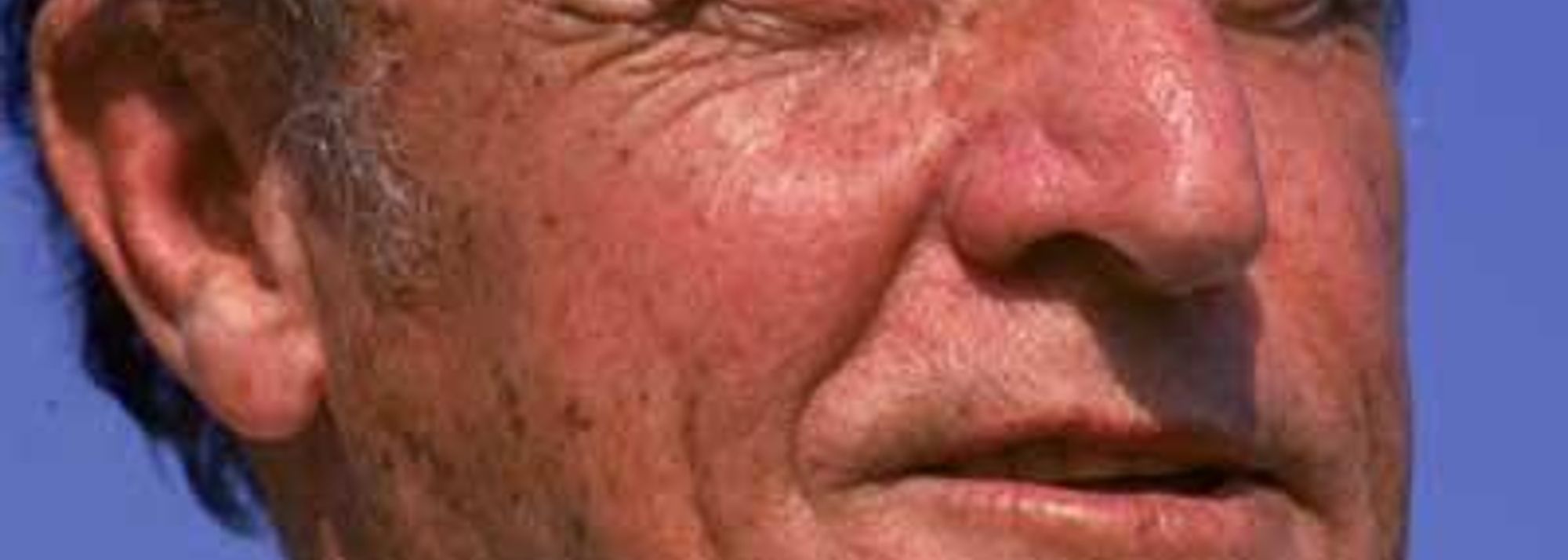Arthur Lydiard of New Zealand (© Getty Images)
Arthur Lydiard, who has died while in the midst of a gruelling lecture tour of the United States at the age of 87 (on Sat 11 Dec), was a supremely successful coach of distance runners, best known for guiding Peter Snell to three Olympic golds. But he was also the man who invented jogging, effectively the catalyst for the fitness boom of the last quarter-century.
Yet Lydiard never really wanted to coach. “I had never set out to be a coach — I didn’t want to be one — but when these young guys began running with me and then winning New Zealand titles, suddenly I was one,” he recalled recently. “Maybe architecture would have given me more money, but would it have given me the same satisfaction?”
Controversial when his coaching ideas first became known, they quickly gained acceptance after New Zealanders Snell, at 800 metres, and Murray Halberg, at 5000m, both won golds at the 1960 Rome Olympics. Now, Lydiard’s training theory is conventional wisdom.
Yet the apparent contradiction in Snell, a two-lap racer, training by doing slow runs of two hours’ duration or more, often over hills, took time to gain widespread favour. “He basically changed my life,” Snell said of his mentor. “I was a run-of-the-mill-type runner and he encouraged me to dream big dreams. His influence in training for middle and distance runners has been so profound.”
Although it began little more than half a century ago, Lydiard’s coaching career was worlds away from today’s professionalism: in 1960, it took an appeal in an Auckland newspaper to pay for Lydiard’s ticket to Rome for the Games. Once there, he found his own lodgings three miles from the athletes’ village, to which he ran or walked each day in the hope that officials might allow him in to supervise Halberg and Snell’s training. And in Snell’s Olympic final, the New Zealander ran in a pair of track shoes hand-made by his coach.
Lydiard claimed that the main requirement of a half-miler was endurance, and Snell proved it. In December 1961, Snell ran a marathon in 2:41. Then, barely a month later, Snell set three world records at 800m, 880yd and the mile.
New Zealanders Dick Tayler, Rod Dixon, Dick Quax and 1976 Olympic 1500m champion John Walker all followed Lydiard’s basic methods, as did Ron Clarke, of Australia, who broke 19 world records in the 1960s. In 1967, Lydiard was hired by the Finnish athletics federation and proceded to revive their proud distance running tradition, with the emergence of Pekka Vasala and Lasse Viren, who both won Olympic golds.
Lydiard’s methods have also influenced successive generations of British coaches and runners, from Dave Bedford and Steve Ovett, through to Paula Radcliffe and Kelly Holmes.
The title of the “man who invented jogging” has been mis-attributed before, but Lydiard espoused his methods for general fitness and well-being around 20 years before the likes of American Jim Fixx and others adapted them for the millions of recreational and fitness runners around the world as they prepared to run marathons in the boom of the 1970s. Lydiard even invented the word in establishing the Auckland Jogging Club.
According to Garth Gilmour’s recent book, Master Coach, Lydiard’s first joggers were a group of men who had had heart attacks but undertook gentle running to exercise, going counter to the medical approach of the time. “Lydiard came up with the idea of combining conditioning with the stimulus of companionship by slow steady cross-country running done in loosely organised groups or ‘jogging’ clubs,” the book recounts. “The active citizenry took to it in a big way. Whole communities, from toddlers to grandma, jog on weekends and holidays.”
Quax, the 1976 Olympic 5000m silver medallist, said of Lydiard, “He was a man many, many years ahead of his time.”
Lydiard’s own, relatively modest, athletics career presaged the marathon boom. A rugby forward, he only took up running for off-season fitness. He soon found the marathon, and while never world-class (his best time was 2:39:05), he won the Auckland Marathon six times between 1949 and 1955, but also took the New Zealand national title in 1953 and 1955. He represented his country at the distance at the 1950 Empire Games.
If it was not his racing achievements that drew more talented athletes to him for training, then it was Lydiard’s charisma and leadership. As Sir Murray Halberg wrote: “I quickly found Arthur the sort of man to be naturally followed and listened to. He was a leader. He talked like one and he acted like one. My first impression of him was of a guy who didn’t go halfway. You either did what he told you to do or you didn’t. There were no short-cuts and he had no intention of wasting his time or yours on doing anything but what he said.
“But neither did he turn anyone away who was prepared to follow, even if they had no prospect of doing anything significant. The more I committed to and followed the development of his concept, the better everything turned out.”
Awarded the OBE in 1962 and his country’s highest honour, the Order of New Zealand, in 1990, Lydiard’s latter years were spent lecturing and also seeking work as a coach to coaches, seeking to replicate his earlier successes, although he was known to be disappointed that his country was unable to find a modest $40,000 annual budget to fund him.
Not that Lydiard claimed every success for himself. Of Viren, who uniquely won the 5000-10,000m Olympic double in 1972 and 1976, Lydiard wrote, “He still sends me a card every Christmas and gives me the credit for his great successes, but I never trained him. I coached his coach to do that.’
Arthur Lydiard, born Auckland, July 6, 1917; died Houston, Texas, December 11, 2004. He is survived by his wife Joelyne.
Click here for original news story



